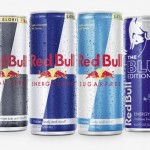What Are Hulling, Quaker, and Other Complicated Terms in the Coffee Industry
Coffee is closely connected with the lives of people. It has a rich history and continues its expansion. Thanks to the fast growth of the java consumption trend, it's becoming more popular than tea. Even those who don't like this beverage and never gave java a try have vast knowledge about coffee. They are familiar with different drinks, countries of origin, and types of beans. However, there are a lot of words that only true java lovers know. If you want to take a deep dive and learn some unusual words, keep reading and find the meaning of terms that you may see the first time in your life.
Hulling
Hulling is an essential part of coffee processing. All beans are seeds of fruits. Before getting packed and delivered to stores, pods undergo a lot of different stages of preparing to be ready for consumption. For starters, seeds are de-pulped from the cherries. However, the fruit isn't the only protection level that has to be removed.
All seeds have thin parchment skin that can spoil the taste of java if not removed. Even if you use a top-notch coffee maker with removable water reservoir, you won't get tasty java made of unprocessed pods. Also, it is dangerous to roast beans that are not hulled, as the dried parchment can burn because of high temperatures. There is no need to apply direct fire. Nobody will enjoy consuming beans that have the taste of smoke and burnt paper.
The first hulling method needs a lot of water. Pods are washed simultaneously after being de-pulped. However, when there is a lack of water, the seeds are dried on the sun inside the parchment. The mucilage gets dried and removed using the hulling machine. Further, beans get roasted.
Quaker
Unfortunately, it's impossible to get all the beans roasted ideally, despite the use of modern technologies. Roasted pods become light-brown, brown, or dark, depending on the roast stage. However, the poorly-roasted remain green or become yellow. In some cases, unripened cherries are picked from trees. It's hard to detect them before the roasting process as all the pods are green. After being roasted, it is easy to detect Quakers.
In mere words, this term describes defective beans that have to be removed after roasting. Otherwise, they can worsen the taste, even if it is made by one of the best coffee makers under $200 with a large number of cool features. If Quakers are ground and brewed with good-quality pods, the drink can get the taste of paper or cereals. It should be noted, not all defects in coffee seeds are bad. Some of them can benefit the taste of java.
Peaberry
The common cherry has two seeds with flat fronts that are faced to each other inside. They are de-pulped and processed separately. However, sometimes some defects in seeds' development occur. In such a case, only one round seed develops inside a cherry. It is called a peaberry. Worth noting, only seeds that have no flat sides can be classified as peaberries. On average, from 5% to 10% of the entire harvest can contain this type of mutation.
Machines easily sort peaberries as they have bigger sizes and weight. They have a better taste profile. Consequently, they are sold for a higher price. It's considered that peaberries have a higher level of acid. Also, they are sweeter and have a more concentrated taste. In fact, even experienced coffee experts can hardly taste the difference between java drinks that are brewed from regular seeds of peaberries. For instance, according to the Koffee Kult reviews, java prepared from beans with flat sides can have a bright and full-bodied taste as well.
Cascara
Coffee and tea are also controversial products that are always compared to each other. However, cherries that contain seeds also can be used for making tea that is called Cascara. Pods get de-pulped from cherries, processed, and roasted. In most cases, the skin of cherries is wasted or used as compost. However, some farmers dry it in the sun and sell it for brewing tea.
Officially, this type of beverage is not recognized as tea. Cascara doesn't have the taste of java as it may seem. It has a bright flavor of fruits. Unlike java drinks made of seeds, beverages made of dried skin or cherries are not rich in caffeine. Therefore, it's not a replacement for coffee. However, Cascara helps to spend the resources wisely and not waste products by making Cascara.
The glossary of a java lover implies a lot of other words that you have to know if you want to be a real professional in the industry. Discovering unique words from the coffee world that are mentioned in the post above, you'll be able to present yourself as a real expert in the industry who knows all the aspects of beans processing and java brewing.





